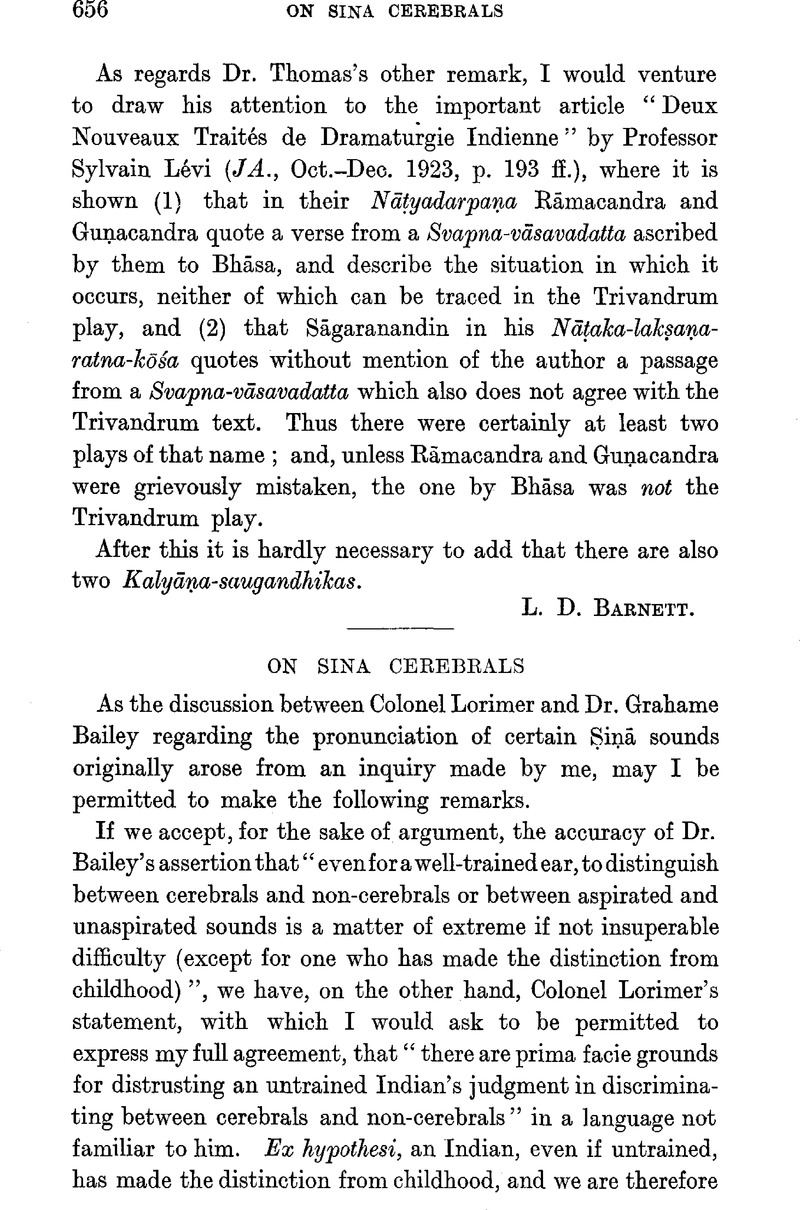No CrossRef data available.

page 658 note 1 Ath. V. Prātiśākhya, i, 22. For the meaning of mūrdhan, see Whitney, l.c., and also Wackernagel, Altind. Gr., § 143.
page 658 note 2 l.c.
page 659 note 1 Alphabetum Brammhanicum (Rome, 1771), 29 ff.
page 659 note 2 Hindūstānī Gr., 5, 6.
page 659 note 3 Hindī Gr., 15.
page 659 note 4 Student's Marāṭhī Grammar, 5.
page 661 note 1 The sounds of ṛ and ṛh are classed by Indian scholars as hypercerebrals (mürdhanyatara).
page 661 note 1 Taylor's Gr., 3.
page 662 note 1 A striking example is found in the use of the Kāshmīrī verb pāthun, to become. This has a dental th, but in certain idiomatic expressions in common use it is spoken with an (?) alveolar (written as a cerebral) ṭh. Thus, we have the very common interjection asě-ti pāṭhi (not pāthi), “may that be my luck also.” So, the Ksh. for “fist” is muśt-, not muṣṭ-.